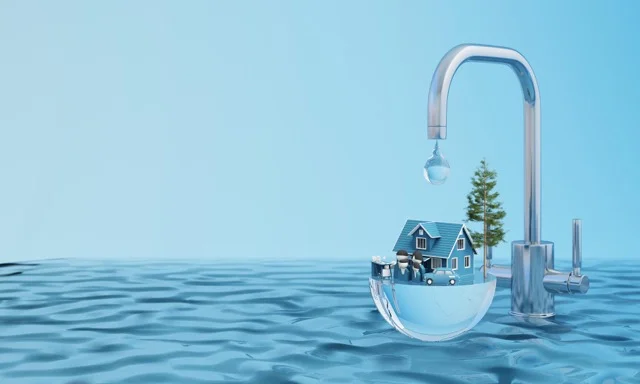The Ultimate Guide To Reclaim Waste
The Ultimate Guide To Reclaim Waste
Blog Article
What Does Reclaim Waste Do?
Table of ContentsFacts About Reclaim Waste RevealedHow Reclaim Waste can Save You Time, Stress, and Money.Top Guidelines Of Reclaim WasteReclaim Waste for BeginnersRumored Buzz on Reclaim Waste
Domestic sewer waste refers to the waste and products from a property septic container. The correct management and disposal of domestic sewage waste need liquid waste to be transferred to a sewer therapy plant where the appropriate methods and tools are used to cleanse and dispose of waste.
Commercial waste commonly includes prospective hazards, such as flammable products or a mix of liquid and strong waste products, and requires an advanced and thorough disposal procedure. The disposal of industrial waste commonly involves the purification of waste before transportation to make certain safe and appropriate disposal. Hazardous waste is created from by-products and runoff of industrial processes and production.
This sort of waste can not use the same sewage management transport or processes as septic or business fluids. The hazardous waste monitoring process needs the examination and screening of fluid waste prior to it undertakes the disposal process (liquid waste disposal). Drainage waste is the liquid waste that comes from runoff and excess stormwater in highly booming areas or cities
Runoff waste can trigger contamination and flooding otherwise taken care of appropriately. Discover more about sewer cleansing and waste management. Making sure appropriate waste management can protect against catastrophes and minimize environmental damage. Both people in property setups and professionals in business or production markets can benefit from comprehending the processes and laws of liquid waste management.
Some Known Details About Reclaim Waste
Contact PROS Solutions today to find out regarding our waste management and disposal solutions and the appropriate means to look after the fluid waste you generate.
(https://www.slideshare.net/leonaube33101)Do you know what occurs to your water when you pull the plug, flush the bathroom or drain pipes the washing maker? No? Well, it deserves knowing. This so-called 'wastewater' is not just a crucial source however, after therapy, will be released to our land, rivers or the ocean. Utilized water from toilets, showers, baths, kitchen sinks, washings and commercial procedures is understood as wastewater.

water made use of to cool down equipment or tidy plant and tools). Stormwater, a form of wastewater, is drainage that moves from agricultural and urban locations such as roofs, parks, gardens, roadways, paths and gutters right into stormwater drains, after rainfall. Stormwater flows unattended directly to regional creeks or rivers, eventually reaching the sea.
Our Reclaim Waste Ideas
In Queensland, many wastewater is treated at sewer therapy plants. Wastewater is carried from residential or commercial sites via a system of drains and pump stations, referred to as sewerage reticulation, to a sewer therapy plant. Local federal governments build, maintain and run most sewage treatment plants. Operators are accredited under the Environmental Protection Act 1994 to discharge treated wastewater at an acceptable environmental standard into rivers.
The Division of Natural Resources suggests city governments concerning managing, operating and preserving sewerage systems and therapy plants. In unsewered locations, city governments may require owners to set up specific or household sewer therapy systems to deal with residential wastewater from commodes, cooking areas, restrooms and washings. The Division of Natural Resources authorizes the usage of household systems when they are confirmed to be efficient.
In some brand-new subdivisions, therapy of some stormwater to eliminate litter, sand and crushed rock has actually begun using gross contaminant traps. Wastewater treatment happens in 4 phases: Gets rid of solid issue.
Wastewater then streams right into huge tanks where solids settle and are gotten rid of as sludge. Oil and residue are skimmed from the surface area. Makes use of tiny living microorganisms referred to as micro-organisms to damage down and remove continuing to be liquified wastes and fine fragments. Micro-organisms and wastes are incorporated in the sludge. Eliminates nitrogen and phosphorus nutrients that might trigger algal flowers in our rivers and endanger marine life.
Reclaim Waste Fundamentals Explained
Nutrient elimination is not readily available in all sewer therapy plants due to the fact that it calls for expensive specialised devices. It is becoming extra common in Queensland. Clear liquid effluent produced after therapy might still have disease-causing micro-organisms. If this effluent is launched right into rivers such as rivers or the sea, the micro-organisms will eventually pass away out.

Many have a peek at these guys wastewater flows into the sewage system. Under the Act, neighborhood governments administer authorizations and licences for environmentally relevant activities (Periods) entailing wastewater releases that could have a neighborhood impact.
The Single Strategy To Use For Reclaim Waste
Otherwise, samples are taken for research laboratory evaluation. Frequently numerous examinations are needed to develop the levels of each of the different pollutants such as oils, heavy steels and chemicals in water. Surveillance gives accurate info regarding water high quality and can validate that permit problems are being satisfied. The information gotten through monitoring offers the basis for making water quality choices.
Report this page